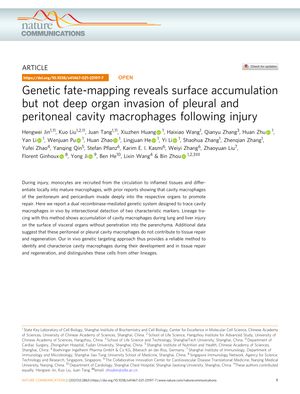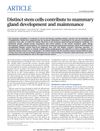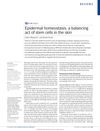Genetic Fate-Mapping Reveals Surface Accumulation But Not Deep Organ Invasion of Pleural and Peritoneal Cavity Macrophages Following Injury
May 2021
in “
Nature Communications
”

TLDR Cavity macrophages gather on organ surfaces but don't really invade or help repair the organs after injury.
The study used a novel genetic fate-mapping technique to track the role of GATA6+ cavity macrophages in mice during tissue repair following lung and liver injuries. Contrary to previous beliefs, the researchers found that these macrophages accumulate on the surface of organs but do not significantly invade the organ tissue or contribute to its repair. The ablation of cavity macrophages did not notably affect the repair process, as shown by no significant changes in injury size, body weight, ALT, AST levels, or tissue fibrosis severity. The study, which included experiments with 4 to 8 mice per group, concludes that cavity macrophages have a minimal role, if any, in tissue repair and regeneration after injury, challenging the existing paradigm of their involvement in deep organ repair.

